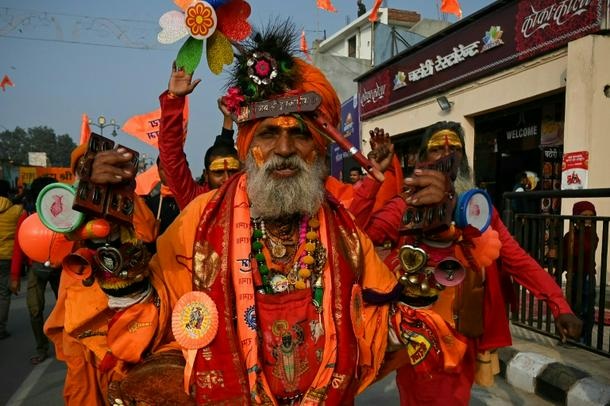Modi Inaugurates Symbolic Temple, Signifying India’s Changing Landscape
Introduction
Indian Prime Minister Narendra Modi has inaugurated a temple in Ayodhya that represents the triumph of his Hindu nationalist politics. The construction of the Ram Mandir temple on the site where a mosque stood for centuries has been a long-standing campaign for Modi’s Bharatiya Janata Party (BJP). The temple inauguration marks the unofficial start of Modi’s re-election campaign for this year.
Historical Background
The demolition of the Babri mosque in 1992 by Hindu zealots sparked religious riots, resulting in the deaths of 2,000 people, mostly Muslims. This incident deeply impacted India’s officially secular political order. The construction of the Ram Mandir temple has been a contentious issue, with devout Hindus believing that the mosque was built on the birthplace of Lord Ram.
The Temple Inauguration
The temple, standing at 50 meters tall, has become a focal point for celebrations and religious fervor. Tens of thousands of devotees, chanting and dancing, have gathered in Ayodhya for the auspicious event. The excitement surrounding the temple inauguration has reached a fever pitch, with thousands of Hindu believers dancing in the streets and religious tunes being played through giant loudspeakers.
The temple, estimated to have cost $240 million, was financed through public donations. Over 2,500 musicians are expected to perform on more than 100 stages, providing entertainment for the pilgrims who have flocked to witness the grandeur of the temple.
Significance for Modi and the BJP
For Modi and the BJP, the opening of the Ram Mandir temple is a significant milestone in their mission to align the country’s governance with Hindu faith. They have consistently emphasized the need to bring Hinduism to the forefront of public life, portraying earlier Islamic rule as a time of oppression. Ayodhya has become a key element in their narrative, symbolizing their fight against perceived historical injustices.
The temple inauguration serves as a platform for Modi to project himself as a defender of the faith, strengthening his appeal to the Hindu nationalist base ahead of the upcoming general election. The BJP is highly favored to win a third successive landslide victory, partly due to Modi’s appeals to Hindu nationalism. Opposition parties have boycotted the temple ceremony, viewing it as a thinly veiled campaign rally.
Concerns and Tensions
While the temple inauguration is a moment of celebration for many Hindus, it has raised concerns among the country’s Muslim population. With India’s already heightened sectarian tensions, many Muslims fear further marginalization and a potential threat to their religious freedom. The memories of past violence and the loss of loved ones during the Babri mosque demolition still haunt some families, highlighting the need for reconciliation and communal harmony.
Conclusion
The inauguration of the Ram Mandir temple in Ayodhya is a significant event in India’s political and religious landscape. It represents the triumph of Modi’s Hindu nationalist politics and the BJP’s mission to align the country’s governance with Hindu faith. While it is a moment of celebration for many Hindus, it also raises concerns among the Muslim population. As India moves forward, it is crucial to address these concerns, promote unity, and ensure that all citizens feel valued and protected, regardless of their religious beliefs.















































